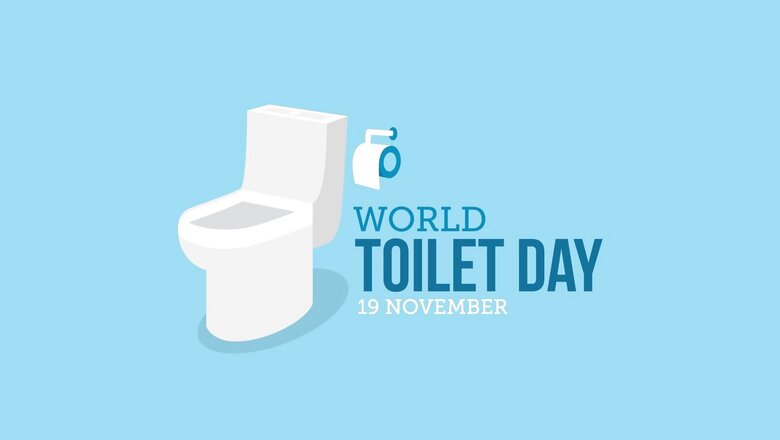
views
WORLD TOILET DAY 2022: World Toilet Day is marked on November 19 every year by the United Nations General Assembly. It is the same day the World Toilet Organization came into existence in 2001. The day is celebrated by a partnership between UN-Water and governments around the world to raise awareness about sanitation issues. The 2022 theme for the day is ‘Making the invisible visible’.

The United Nations aims to explore how poor sanitation systems spread human waste into rivers, lakes and soil, polluting underground water resources. Let us explore the long history of toilets with these 6 interesting facts:
The First Flushable Toilet
English plumber Thomas Crapper is often credited with designing the first flush toilet in the 1860s. However, 300 years earlier, in the 16th century, Europe had already discovered modern sanitation. Sir John Harrington, the godson of Queen Elizabeth I, had invented a water closet with a raised cistern and a small downpipe through which water ran to flush in 1592.
But his invention was ignored for almost 200 years. In 1775 Alexander Cummings, a watchmaker, developed the S-shaped pipe under the toilet basin to keep the foul odours out.
What Came Before Today’s Toilet Paper
It is widely known that China invented wrapping and padding material called paper in the 2nd century BC. Evidence suggests that they used that paper like toilet paper too. However, it was not until 1391 that the first modern toilet paper was made.
It was created for the family of the Chinese Emperor. Each perfumed sheet of toilet paper has come a long way since. While paper became widely available In the late fifteenth century, the mass manufacturing of modern toilet paper began in the late 19th century. Joseph C. Gayetty is credited to have created the first commercially packaged toilet paper in 1857.
The Origins Of The Word
The Middle French word ‘toilette’ means “small piece of cloth.” This word became ‘toilet’ in English. It referred to a cloth that people put over the shoulders while dressing their hair or shaving.
Then it was given the meaning of being a cloth covering a dressing table. Eventually, the word was given a more abstract meaning. The word started being applied to the entire process of washing, grooming, and dressing.
NASA’s New Space Toilet
According to Space.com, NASA’s new space toilet system is known as the Universal Waste Management System (UWMS) and costs $23 million (approximately ₹1 billion). It is 65% smaller and 40% lighter than the toilet previously used on the space station. The new UWMS was launched on September 29, aboard a Northrop Grumman Cygnus cargo capsule, as part of a routine resupply mission.
World’s First Latrines Connected To Sewer
The traces of the first buildings with latrines connected to a sewage system were found in the city of Mohenjo-Daro, in the Indo valley (in modern-day Pakistan). It is believed that the residents of the city would wash down their latrines with water and through the sewage system, this wastewater was taken to the sump or to the Indo River.
The Oldest Toilet Discovered
The remnants of a 5,500 years old latrine have been discovered in Japan. However, the title of the oldest extant lavatory is given to a centuries-old structure at Tōfukuji, a temple of the Rinzai sect of Zen in Kyoto. It was constructed in the early Muromachi period (1333–1568). While it is no longer in use today, the extant lavatory is designated an Important Cultural Property.
Read all the Latest Lifestyle News here














Comments
0 comment